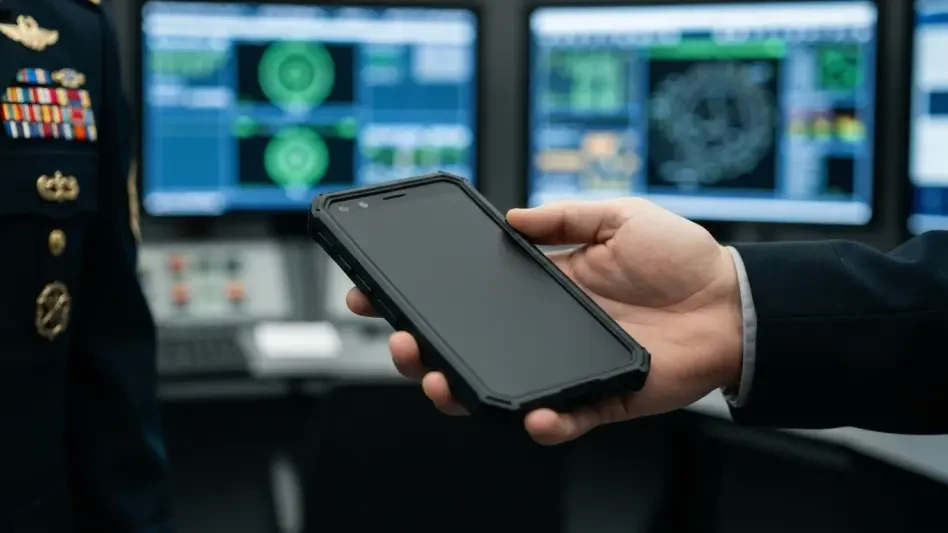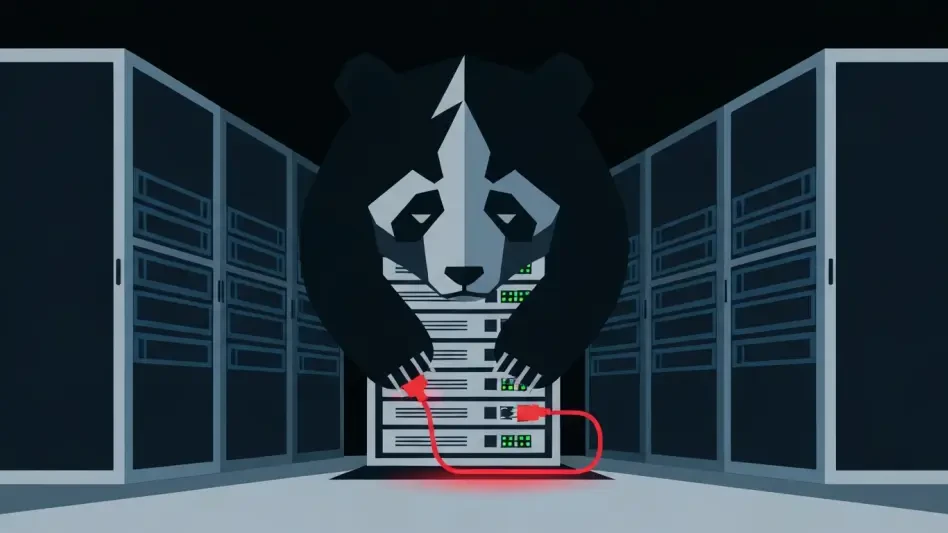In a seismic event that has reverberated through the global cybersecurity community, the recent KnownSec leak has exposed critical insights into the shadowy realm of China’s cyber operations, shaking the foundations of international digital security. On November 2 of this year, a staggering 95 terabytes of sensitive data from KnownSec, a Beijing-based cybersecurity firm with suspected connections to the Chinese government, emerged briefly on a public platform before being swiftly removed. This breach offers an unprecedented look into the intricate machinery of state-sponsored hacking, revealing sophisticated tools, extensive target lists, and strategic maneuvers that span the globe. Far from an isolated incident, this exposure serves as a stark warning about the escalating sophistication of digital espionage and its implications for international security. As nations grapple with the fallout, the incident raises pressing questions about the intersection of state power and private enterprise in cyberspace, urging a deeper examination of how such operations are orchestrated and what they mean for the future of digital defense.
Unveiling the Private Contractor Model
The KnownSec leak casts a spotlight on the critical role private contractors play in China’s cyber strategy, functioning as extensions of state power while cloaking official involvement in a veneer of deniability. These entities, often likened to digital mercenaries, are contracted to execute complex espionage missions, mirroring the structure of conventional defense industries but within the intangible battleground of cyberspace. KnownSec, with reported ties to major tech players and under the influence of state security apparatus, exemplifies how such firms enable rapid scaling of cyber campaigns. This model not only amplifies operational capacity but also complicates attribution, as governments can distance themselves from direct responsibility. The leaked data reveals a systematic approach to outsourcing hacking tasks, highlighting a deliberate strategy to leverage private expertise for national agendas. This blurring of lines between public and private spheres in cyber warfare underscores a growing challenge for international norms and accountability mechanisms.
Delving deeper into this contractor paradigm, the breach exposes how these firms operate within a competitive ecosystem, bidding on government contracts to conduct targeted attacks. The documentation suggests a well-organized framework where private entities like KnownSec are integral to executing state directives, often targeting critical infrastructure and sensitive data across multiple nations. This setup allows for specialized skills and resources to be deployed without the constraints of traditional bureaucratic oversight, enhancing efficiency and reach. However, it also raises significant ethical and legal dilemmas, as the lack of transparency fuels concerns about unchecked power in the digital domain. The reliance on such proxies indicates a calculated effort to maintain strategic ambiguity, making it harder for affected countries to respond decisively. As this model becomes more prevalent, it signals a shift in how cyber conflicts are waged, necessitating a reevaluation of global cybersecurity policies to address these hybrid threats.
Exposing an Arsenal of Advanced Tools
Among the most striking revelations from the KnownSec leak is the vast and sophisticated array of hacking tools at the disposal of these operations, designed to breach and maintain access to critical systems worldwide. The exposed materials detail an arsenal that includes remote access trojans (RATs), hardware implants, and exploit kits, all engineered for stealthy infiltration and long-term persistence in targeted networks. Evidence points to data stolen from high-profile entities across Asia and beyond, illustrating the extensive reach of these cyber campaigns. Often associated with advanced persistent threats (APTs) tied to state intelligence, these tools reveal a level of technical prowess that poses a severe risk to global digital infrastructure. The breadth of this toolkit suggests not just intent but a well-funded, methodical approach to compromising systems across diverse sectors, from telecommunications to government networks, amplifying the urgency for robust countermeasures.
Further examination of the leaked data uncovers the precision and adaptability of these cyber weapons, tailored to exploit specific vulnerabilities in critical sectors. The sheer volume of operational details indicates a focus on sustained access, allowing for continuous data extraction and potential disruption at a moment’s notice. This capability to linger undetected within systems heightens the threat level, as it enables attackers to strike strategically during geopolitical flare-ups or economic rivalries. The global scope of the compromised entities, spanning multiple continents, reflects a deliberate strategy to target areas of strategic importance, undermining national security and economic stability. Such revelations emphasize the need for enhanced detection mechanisms and international collaboration to neutralize these pervasive threats. As the sophistication of these tools becomes apparent, it serves as a grim reminder of the evolving nature of cyber warfare and the pressing need for defenses to evolve in tandem.
AI-Driven Threats on the Horizon
One of the most alarming aspects unearthed by the KnownSec leak is the integration of artificial intelligence (AI) into cyber espionage, marking a transformative shift in the landscape of digital threats. Documentation reveals the use of AI models to craft deceptive phishing lures and generate exploit code, automating attacks at an unprecedented scale. This technological leap suggests a future where malicious campaigns could be executed with minimal human intervention, significantly increasing their frequency and elusiveness. Internal communications within the leaked files hint at plans to further enhance surveillance capabilities through AI, a development that experts caution could render traditional defense mechanisms obsolete. This emerging trend points to a new era of cyber warfare where the speed and adaptability of machine-driven attacks challenge the ability of nations to protect their digital borders.
Beyond the immediate implications, the incorporation of AI into state-sponsored hacking operations signals a broader paradigm shift that could redefine global cybersecurity challenges. The potential for AI to analyze vast datasets and identify vulnerabilities faster than human operators introduces a layer of complexity to threat detection and response. Such capabilities could enable attackers to tailor campaigns with pinpoint accuracy, exploiting weaknesses before patches or defenses are deployed. The leaked insights into these advancements underscore a critical gap in current security frameworks, which are often ill-equipped to counter automated, intelligent threats. As this technology becomes more accessible, there is a growing risk of proliferation among other malicious actors, further destabilizing the digital ecosystem. Addressing this frontier demands not only technological innovation but also international dialogue to establish norms around the use of dual-purpose technologies in cyberspace.
Geopolitical Tensions and Economic Impacts
The KnownSec leak transcends technical boundaries, emerging as a significant geopolitical flashpoint that intensifies existing tensions between China and other global powers. The exposed target lists encompass a wide array of sectors—healthcare, transportation, and defense—across regions including North America, Europe, and Asia, highlighting a strategic focus on disrupting key adversaries. This broad targeting exacerbates diplomatic strains, as affected nations confront the reality of sustained digital incursions into their most sensitive areas. The breach’s revelation of operations against critical infrastructure amplifies fears of potential sabotage during times of conflict, positioning cyberspace as a central arena for geopolitical rivalries. Such actions challenge the stability of international relations, pushing countries to reconsider their defensive postures and alliances in response to these persistent threats.
Economically, the ramifications of the leak are equally profound, with the theft of intellectual property posing losses potentially reaching into the billions. The exposure of proprietary data and operational source code creates a ripple effect, as other threat actors could reverse-engineer these tools, leading to a surge in sophisticated malware on a global scale. This proliferation risk threatens to undermine trust in digital systems, impacting industries reliant on secure transactions and data integrity. Moreover, the involvement of major tech ecosystems in hosting related components complicates international tech rivalries, as economic competition intertwines with security concerns. The scale of potential damage necessitates urgent policy interventions to safeguard economic interests and curb the spread of stolen technologies. As nations assess the financial toll, the incident underscores the intertwined nature of cybersecurity and economic resilience in an interconnected world.
Charting a Path for Global Defense
In the wake of the KnownSec breach, a resounding call for enhanced global cybersecurity measures echoes across the international community, driven by the convergence of state agendas, private entities, and cutting-edge technologies. Experts advocate for the adoption of zero-trust architectures, which assume no entity is inherently secure, thereby minimizing vulnerabilities within networks. Alongside this, there is a push for improved threat intelligence sharing among nations and organizations to preempt and mitigate attacks before they escalate. The sophistication revealed in the leak highlights the inadequacy of isolated defenses, urging a collective approach to counter state-backed cyber operations. This incident serves as a catalyst for reevaluating how digital security is prioritized on a global scale, emphasizing the need for unified strategies to address evolving threats.
Equally critical is the growing demand for regulatory oversight of private cyber firms to prevent their exploitation in state-sponsored activities. The blurred boundaries between public and private interests, as exposed by the breach, necessitate clear guidelines to ensure accountability and ethical conduct in the industry. Developing AI-driven defenses to match the pace of automated threats is another focal point, requiring investment in innovation and expertise to stay ahead of adversaries. International cooperation stands as a cornerstone of this effort, with calls for treaties and agreements to establish norms around cyber conduct and the use of advanced technologies. Reflecting on the scale of this exposure, it becomes evident that without such collaborative frameworks, the digital arms race risks spiraling out of control. The urgency to act is clearer than ever, as the global community faces the task of fortifying defenses against an increasingly complex and relentless cyber landscape.








